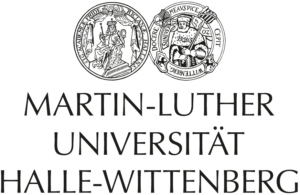Insights into the Mechanism of Amyloid Fibril Formation of the Parathyroid Hormone
by Bruno Voigt
Investigation of long-term adhesion and interaction mechanisms of polyurethane-based coatings on thermoplastic substrates under the influence of alcoholic and aqueous ambient media
by Sergei Wittchen
Location: Online, via WebEx
Time: 3.20pm-5.00pm
Abstracts
Insights into the Mechanism of Amyloid Fibril Formation of the Parathyroid Hormone
Bruno Voigt
The parathyroid hormone (PTH) is an 84 residue peptide produced by the parathyroid glands controlling the calcium and phosphate level in human blood. The N-terminus shows an α-helical propensity whereas the C-terminus is intrinsically disordered.
In previous studies we showed that PTH is able to form amyloid fibrils which are assumed to be the storage form of the hormone [1]. We found the curvilinear fibrils to be reversible upon dilution. In the thermodynamic equilibrium there is a remaining monomer fraction of appr. 70 µM, representing the so called “critical concentration”.
In this study we aim to characterize structural properties of the PTH monomer as well as a monomer-oligomer equilibrium over a wide range of concentrations by employing different biophysical methods. A similar approach has recently been reported for the tracking of oligomers during the fibril formation of ΔN6 β2-microglobulin [2]. Our results suggest a structural reorientation of the N-terminal region as well as the formation of transient oligomers to be key factors contributing to the “critical concentration” as a thermodynamic aspect of amyloid fibril formation.
[1] Gopalswamy et al., Biochim. Biophys. Acta 2015, 1854(4):249-257
[2] Karamanos et al., eLife 2019;8:e46574
Investigation of long-term adhesion and interaction mechanisms of polyurethane-based coatings on thermoplastic substrates under the influence of alcoholic and aqueous ambient media
Sergei Wittchen
In order to improve the adhesion of the coating to the plastic substrate, both theoretical ideas regarding paint adhesion to the thermoplastic substrate and the diffusion processes in the coatings under the influence of ambient media, as well as the influence of crosslinking on the resistance of the coatings to swelling / diffusion are considered. For this purpose, common methods of polymer characterization were used in this work to understand and quantify the problems of swelling, diffusion and adhesion. A new method to characterize the barrier properties of the polyurethane coatings based on the determination of the diffusion coefficients using dielectric analysis (DEA) was also developed in this work. The purpose of this work is to investigate the influence of the crosslink density on the barrier effect of the protective coatings based on polyurethane in order to improve the adhesion of the decorative polyurethane-based coatings on the selected thermoplastic substances IXEF and Xenoy. Thus, the work has direct practical relevance and offers the solutions to the problem of blistering and less adhesion of the polyurethane coatings on the thermoplastic substrates with repeated swelling. The area of application is the branch of small electrical household appliances that come into regular contact with cleaning fluids based on ethanol and water. The focus of the work is the development of the method for in situ observation of the swelling processes during swelling of the protective coatings.




